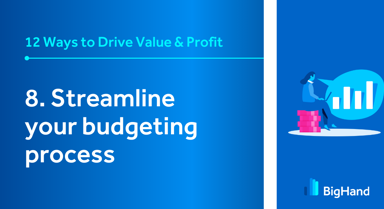A recent article by McKinsey & Company noted “43 percent of the 127 CFO respondents we recently surveyed cite the need to streamline their overall budgeting processes to react more quickly and efficiently. Meanwhile, 65 percent anticipate more use of rolling forecasts in 2021 and beyond.”
As firms are squarely in the middle of the budgeting process for 2021, we’ve been addressing best practices for better budgets on our blog. In one of our recent posts, we addressed the four pillars upon which firm managers should be building their budgets: resources, revenue, operating expenses and capital expenditures. This time, we are once again drawing on our years of experience helping law firms leverage data to achieve sustainable budgets and sharing some of the most important tips for reigning in costs.
Tips for Building Better Budgets
- Versioning. Having alternate budgets for multiple scenarios is important for giving firms options as the year progresses. While it may be difficult to predict a pandemic like COVID-19, firms should be able to quickly create a new budget version that reflects the changing market conditions and predicts and updated and realistic outcome.
- Monitoring budget variance. As has been a recurring theme in our posts, agile firms need to be monitoring their performance closely, so they know when they need to adjust their plans. Initiating variance reviews on a regular basis, usually monthly or quarterly, enables your firm to identify changes in revenues or expenses that can push your firm off track from meeting budget goals. This variance monitoring can be done by merging general ledger information with budget information, and tracking budget to actual exceptions.
- Building forecast budgets. With the data available to firm managers, budgeting should be an ongoing process that is updated based on firm performance throughout the year. Forecast budget versions can be an effective way to project EOY results by combining actual YTD values with budget values for the remaining periods in the year, giving an accurate prediction that can use to make key decisions that support a strong finish for the year.
- Having the right data. Your firm’s financial data might be decentralized and located in a variety of systems such as HR, BI, or project management. Aggregating data from all these sources and parsing it to ensure budgeters have all the actionable data is important, especially at the start of the budgeting process.
- Building budgets throughout the year. While Q4 may be your cycle for budgeting, quarters 1, 2, and 3 are cycles to manage against the budget, ensure actuals are on track, and reforecast if necessary.
- Establishing accountability. Key players throughout the firm are more likely to stay on track if revenue and expenses are being regularly compared to the budget. Anyone in your firm that has budget authority should be required to provide explanations for both positive and negative variance versus the budget.
The budgeting process is naturally stressful for all firms, but with proper maintenance, strong data hygiene and enforced accountability, it does not have to be. Following these tips for building—and maintaining—better budgets not only will deliver better budgets and forecasts this year, but they will make the process easier in coming years. If you’d like to learn more about strengthening your firm’s budgeting process, feel free to contact us or request a demo of our Intellistat Budgeting and Forecasting Module.






